How to Actually Look for a Job (Without Wasting Everyone’s Time)
Looking for a job is a full-time job. Treat it that way.
Looking for a job is a full-time job. If you’re already employed, you’re basically running two jobs—one where you’re sneaking around hoping your boss doesn’t notice, and another where you’re half-assing the search because your calendar is full of “team syncs” you don’t care about. Spoiler: both jobs will suffer.
So if you can afford it, quit. Rip the Band-Aid off. Free yourself up to do the thing properly. Yes, it’s scary. But you’ll optimize your search, keep your integrity, and avoid that awkward “my boss found out I was interviewing” moment.
Once you “quit”, you can start your job search (even though you are still technically employed).
Step 1: Don’t Start With “Networking” (aka Begging Random People)
The rookie mistake? Immediately setting up coffees with people you barely know. “I’m looking for my next thing!” is not a pitch. It’s a cry for help. People don’t know how to help you if you don’t know how to help yourself.
Before you talk to anyone, get clarity:
What kind of companies excite you?
What roles could you see yourself thriving in?
What industries or missions make you want to get out of bed?
You don’t need a recruiter or a career coach for this. You need a notebook and some honesty. Figure it out yourself. Yes, don’t be a little baby: figure it out yourself.
Repeat: don’t email all your contacts with a general email asking to grab coffee or zoom call. Only email specific people with a specific action (like on making an email introduction).
Step 2: Decide How You Can Help (And Say It Clearly)
Once you’ve got your list of target companies, the next step isn’t “email the CEO a novel about your life story.” It’s figuring out, very specifically, how you can help them.
Can you make their product better?
Can you spot gaps on their website or messaging?
Do you have a skill that plugs neatly into their biggest pain point?
Great. Write that down in one sentence. If you can’t explain it in one sentence, you don’t actually know how you can help.
Step 3: Do Something Before You Ask
Here’s a hack: do a little work before you reach out.
Yeah, i know … obvious. But just doing that puts you in the top 2%.
Send them something they can actually use—a product suggestion, a market insight, even a bug report that’s been annoying customers. Show value before you ask for value. It changes the entire dynamic.
Step 4: The Email (Keep It Simple)
When you finally hit “send,” here’s the formula:
One sentence about what you can do for them.
One or two quick bonafides (think: “Built X at Y company, scaled Z to 10M users”).
A link to your LinkedIn profile. Not your resume. No one opens attachments.
That’s it. If they want more, they’ll click.
Also, make sure your LinkedIn profile is tight before you start emailing. You wouldn’t go to a date with food in your teeth; don’t apply for jobs with a sad, outdated LinkedIn.
Step 5: Leave Gracefully
If you’re quitting first (again: best option), don’t ghost your current team. Tell them you’re leaving, ideally with some notice. You’ll preserve relationships, avoid sneaking around, and maybe even get some unexpected intros. People actually like helping someone who left on good terms.
The Punchline
The job search isn’t about “networking.” It’s about clarity, specificity, and proving you can help before you ask for anything. Quit if you can, get clear on what you want, do some actual homework, then send sharp, simple outreach that makes people want to talk to you.
Do that, and you won’t just find a job—you’ll find the right one.
summary:
Networking is begging. Helping is hiring.
Quit first. Job hunt second. Optimize everything.”
Looking for a job while employed = sneaking around like a bad spouse.
note: Flex Capital invests in 80+ seed-stage start-ups per year (~2 per week). typical check is $400k. please reach out if you know amazing founders that want to change the world.
X of the week:
if you like this article, please do three things:
share it with someone you admire
follow me (@auren) on X
subscribe to the “World of DaaS” podcast
(if you hate this, please share with all your enemies)


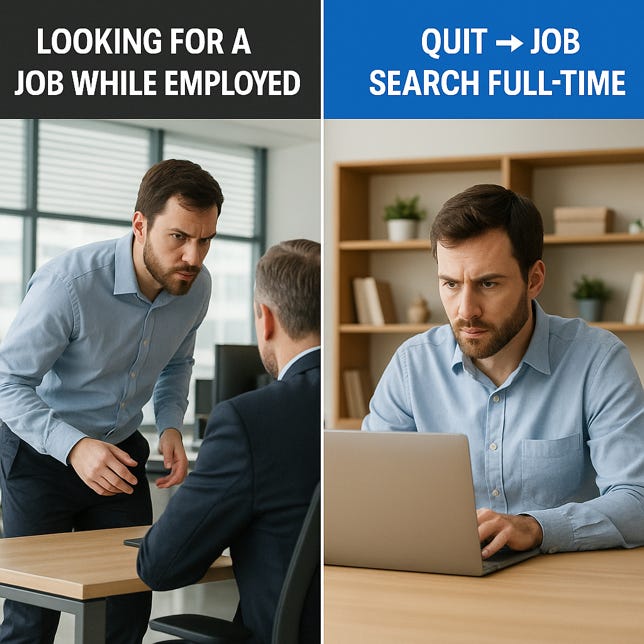
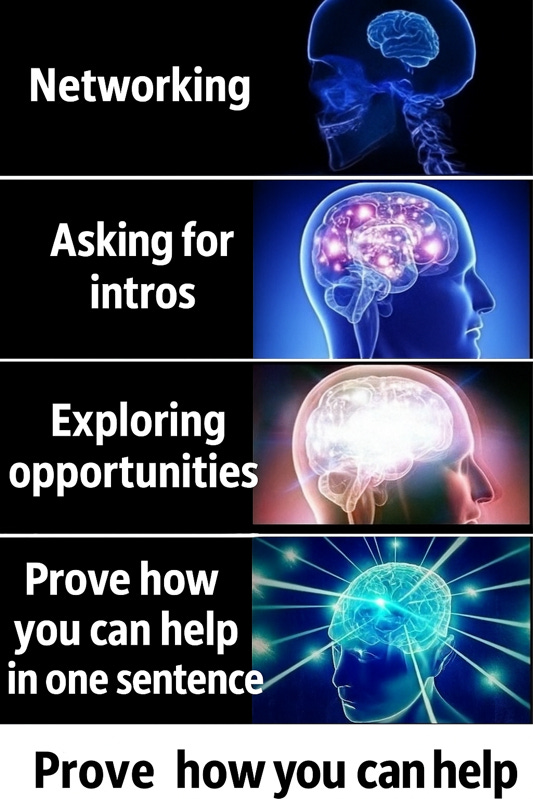
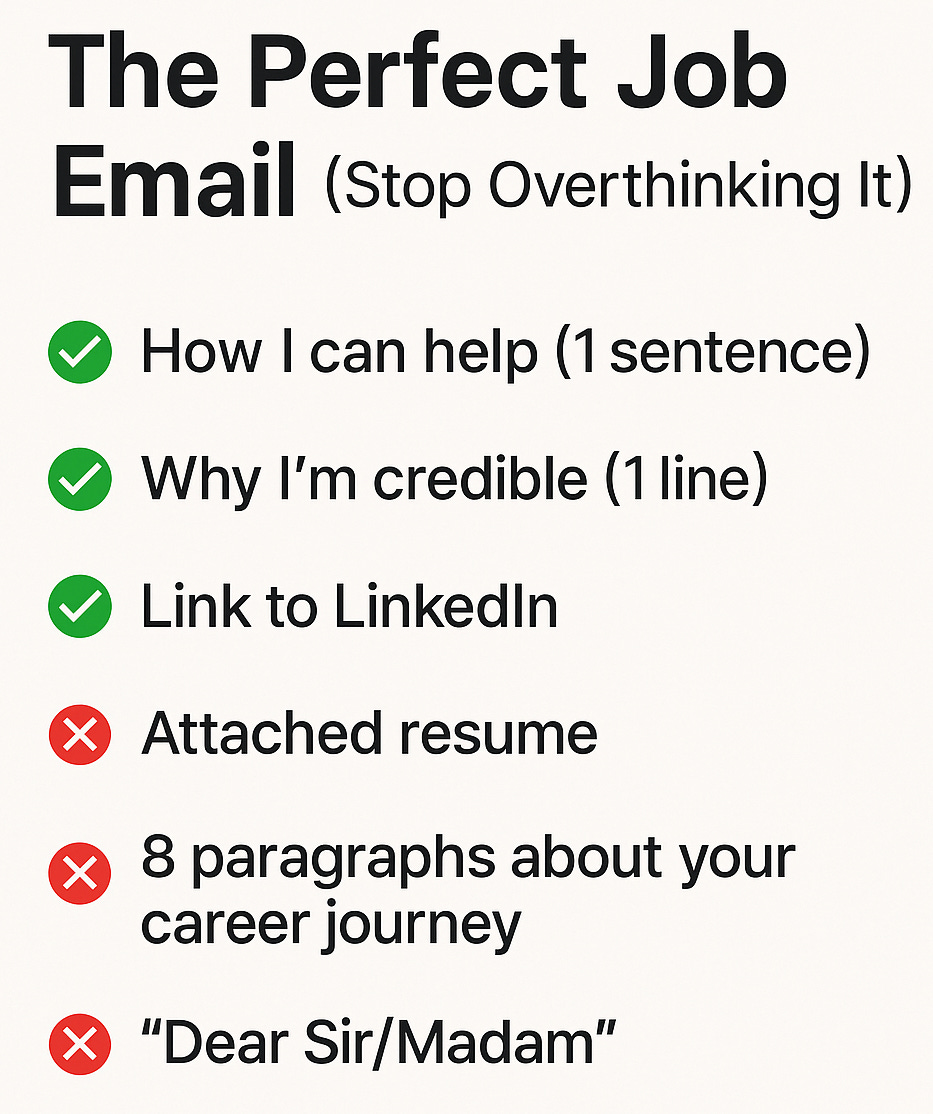
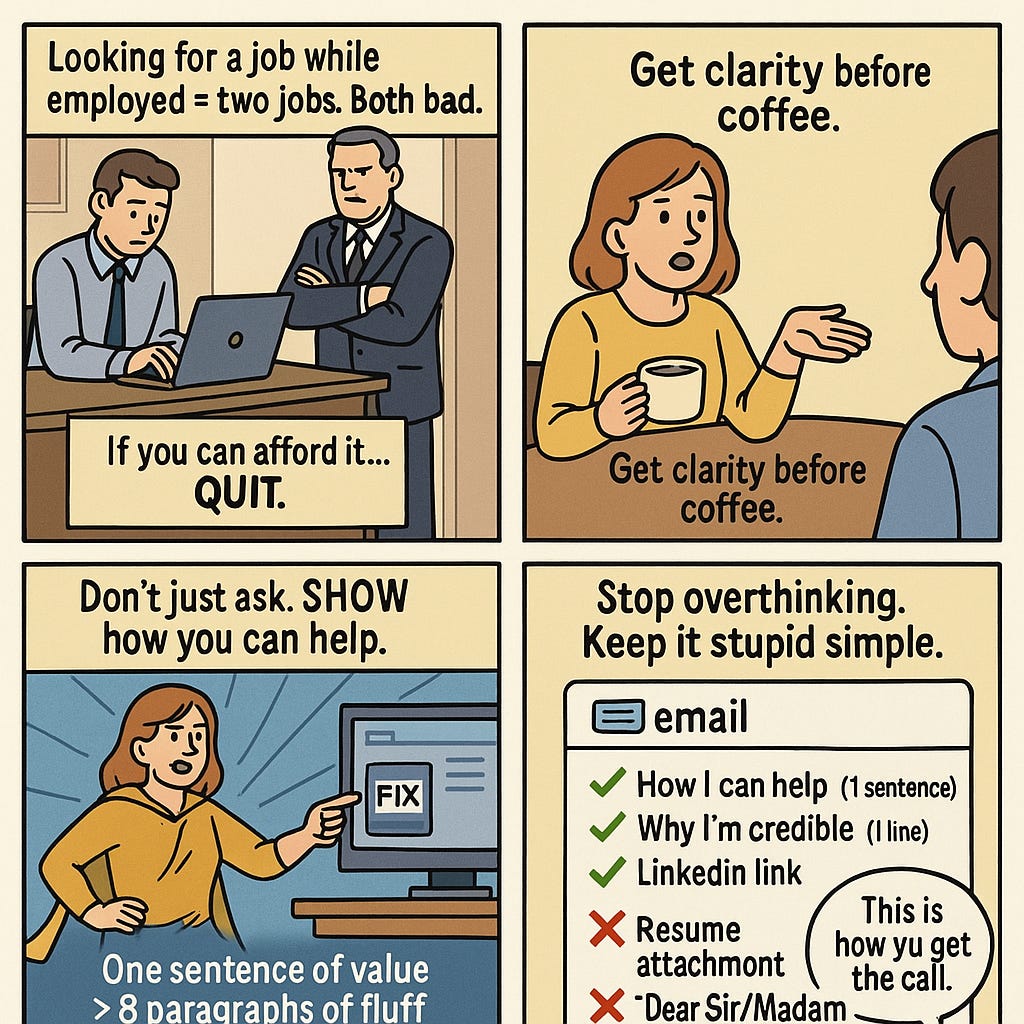
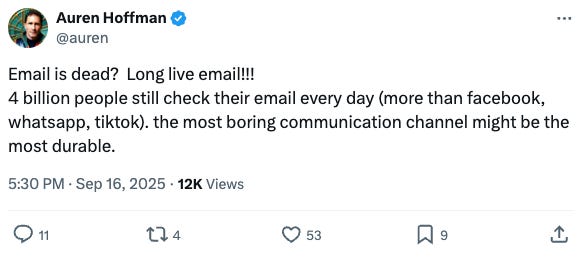
All the AI slop images shared in this article reduce your credibility
Excellent advice. It was 40 years back, and I was an immigrant, hungry to build some financial reserves. Yet I quit cold turkey. The guilt of sneaking around for interviews was too much! However, it also created a mental space for clearer thinking about my next steps. And I ended up starting a company.